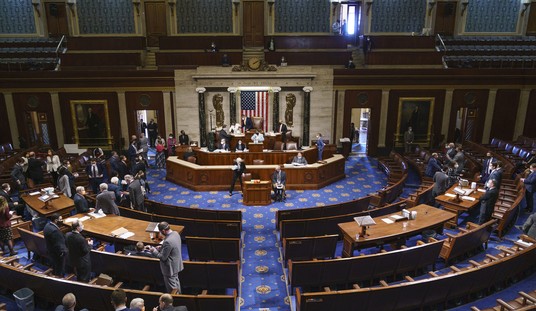The markets fell on bad economic news everywhere. “European stocks saw their steepest falls since March 2009. Banks plunged in part after The Wall Street Journal reported U.S. regulators were intensifying scrutiny of the U.S. arms of Europe’s biggest banks, worrying about spillover from Europe’s debt crisis into the U.S. banking system. … ‘No sector is surviving this tidal wave of selling, and the fact that financials are first in the firing line will only lend support to the anti-short-selling-ban camp,’ said Will Hedden, sales trader at IG Markets. ”
John Carney at CNBC describes why the crisis might spill over. The problem is driven by two effects, uncertainty and the effect of a flight to ‘safety’. Nobody really knows how great the actual exposure to a shaky European banks is and therefore bring their money back into the US. And there the matter ends, doesn’t it? Doesn’t it? Carney writes:
Part of the reason is that we just don’t know how interconnected various financial institutions are with each other. But 2008 taught us that just because we don’t see the connections, it doesn’t mean they aren’t there. …
Imagine for a moment that you are a corporate Treasurer at a company sitting on $100 million. The Wall Street Journal lands on your CFO’s desk. Now he wants to know what the company’s exposure to Europe is. Do you want to tell him you have tens of millions in funds that may be exposed to Europe, and that those millions are earning you pennies? Not if you want to keep your job.
So you do the rational thing. You redeem out of prime funds. You put the money in the bank. Or in government funds. Or maybe you go buy some Treasury bills. …
Now the money’s back safe. Does it stay that way? What happens next depends on a few imponderables. The Wall Street Journal writes:
Thanks partly to the Federal Reserve’s so-called quantitative-easing program, huge amounts of dollars have been sloshing around the financial system, and much of it has landed at international banks, according to weekly Fed reports on bank balance sheets. …
Regulators are trying to guard against the possibility European banks that encounter trouble could siphon funds out of their U.S. arms, these people said. Regulators recently have ramped up pressure on European banks to transform their U.S. businesses into self-financed organizations that are better insulated from problems with their parent companies, a senior bank executive said. …
This spring, foreign banks were able to build up ample cash cushions, thanks largely to quantitative easing—the Fed’s $600 billion bond-buying program, which brought more money into the banking system in the U.S., including foreign banks’ coffers.
Yet even if the European banks could somehow be stopped from meeting their liquidity crisis from American sources, it would still be a liquidity crisis. How would it be if credit seized up on the Old Continent? Reuters reports:
an unidentified euro-zone bank borrowed $500 million in one-week dollars from the European Central Bank. It was the first time a euro-zone bank tapped the ECB for such funding since February.
Short-term money markets showed further signs of bank stress emanating from Europe’s fiscal strains. The benchmark for unsecured dollar loans between banks, three-month Libor LIBOR, rose to its highest in 4-1/2 months, the latest in a series of such peaks.
Investors have not completely cut off funding to European banks, but most of them are reluctant to lend beyond a week.
A European bank crisis would be likely to have effects on the US — and the rest of the world — one way or the other.
“No Way In” print and Kindle edition at Amazon
Tip Jar or Subscribe for $5










Join the conversation as a VIP Member